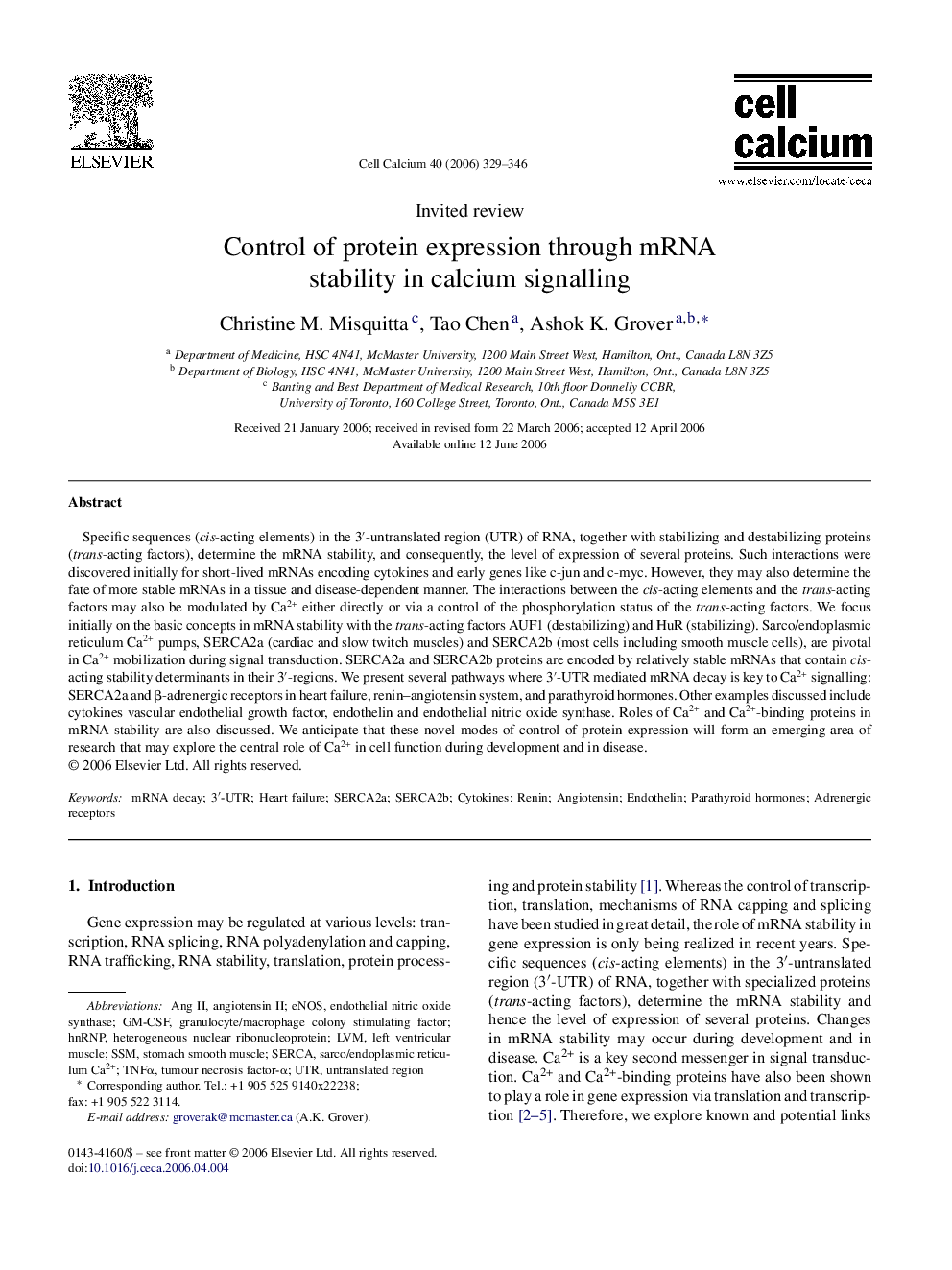| Article ID | Journal | Published Year | Pages | File Type |
|---|---|---|---|---|
| 2166723 | Cell Calcium | 2006 | 18 Pages |
Specific sequences (cis-acting elements) in the 3′-untranslated region (UTR) of RNA, together with stabilizing and destabilizing proteins (trans-acting factors), determine the mRNA stability, and consequently, the level of expression of several proteins. Such interactions were discovered initially for short-lived mRNAs encoding cytokines and early genes like c-jun and c-myc. However, they may also determine the fate of more stable mRNAs in a tissue and disease-dependent manner. The interactions between the cis-acting elements and the trans-acting factors may also be modulated by Ca2+ either directly or via a control of the phosphorylation status of the trans-acting factors. We focus initially on the basic concepts in mRNA stability with the trans-acting factors AUF1 (destabilizing) and HuR (stabilizing). Sarco/endoplasmic reticulum Ca2+ pumps, SERCA2a (cardiac and slow twitch muscles) and SERCA2b (most cells including smooth muscle cells), are pivotal in Ca2+ mobilization during signal transduction. SERCA2a and SERCA2b proteins are encoded by relatively stable mRNAs that contain cis-acting stability determinants in their 3′-regions. We present several pathways where 3′-UTR mediated mRNA decay is key to Ca2+ signalling: SERCA2a and β-adrenergic receptors in heart failure, renin–angiotensin system, and parathyroid hormones. Other examples discussed include cytokines vascular endothelial growth factor, endothelin and endothelial nitric oxide synthase. Roles of Ca2+ and Ca2+-binding proteins in mRNA stability are also discussed. We anticipate that these novel modes of control of protein expression will form an emerging area of research that may explore the central role of Ca2+ in cell function during development and in disease.
